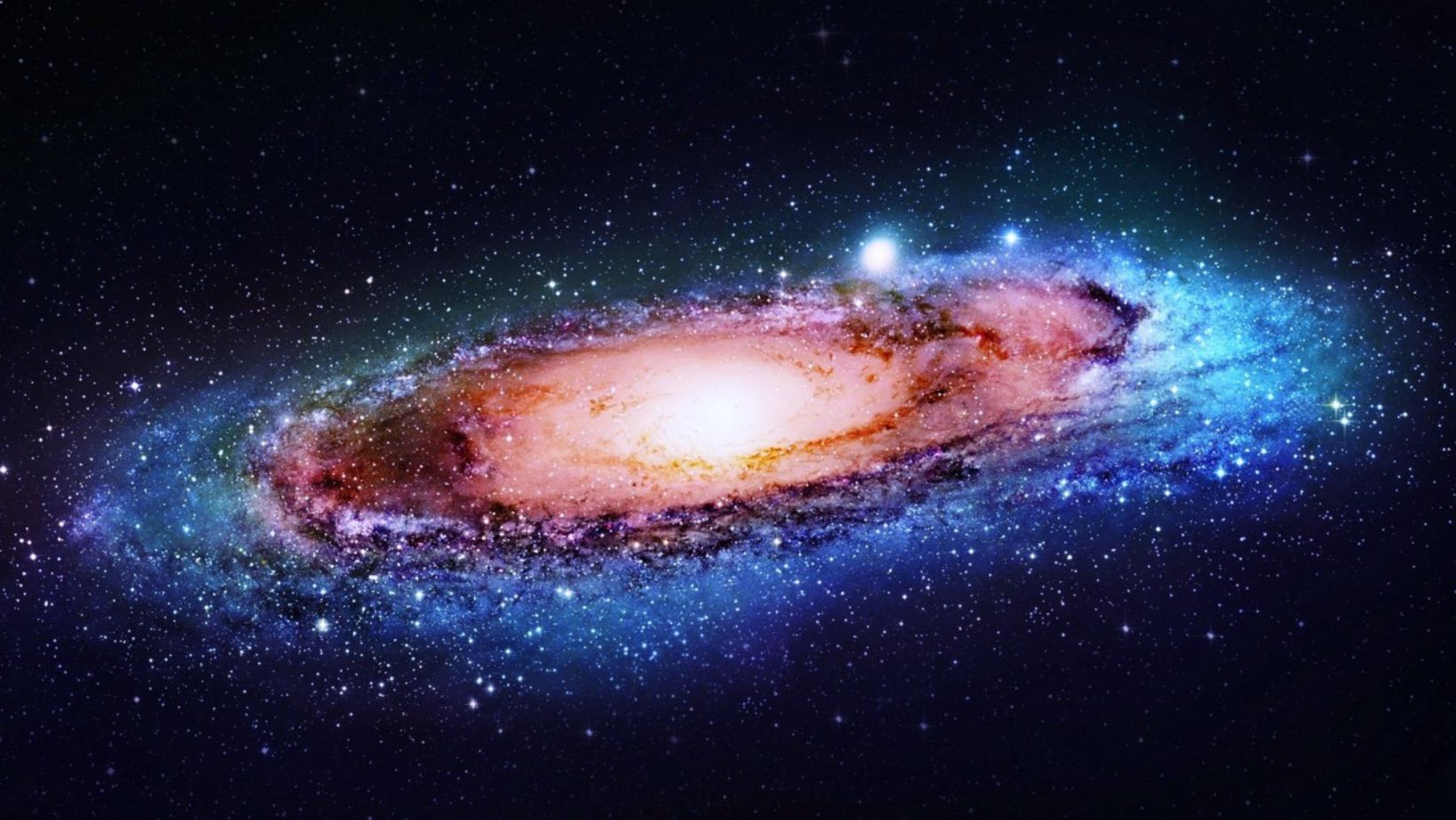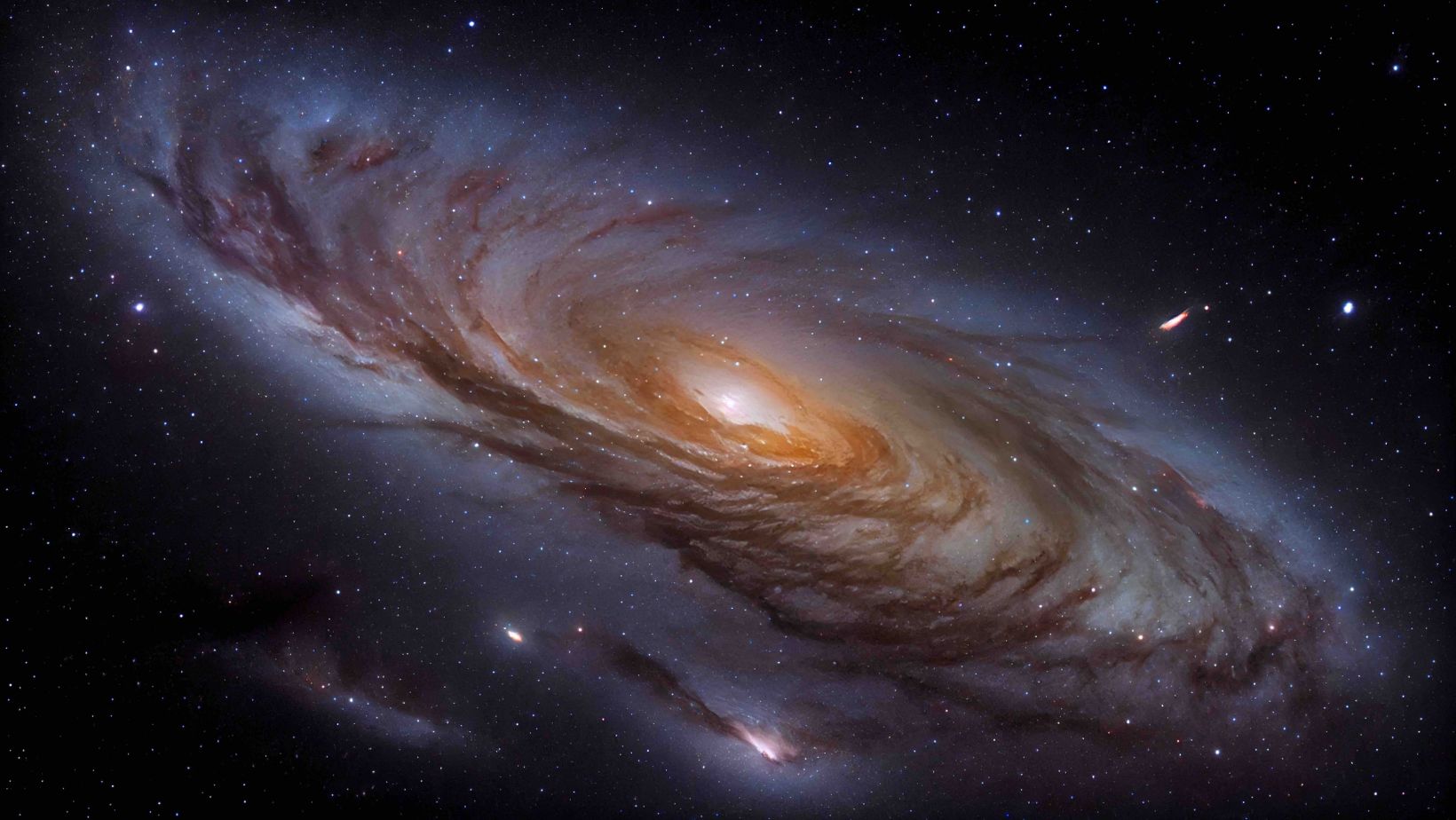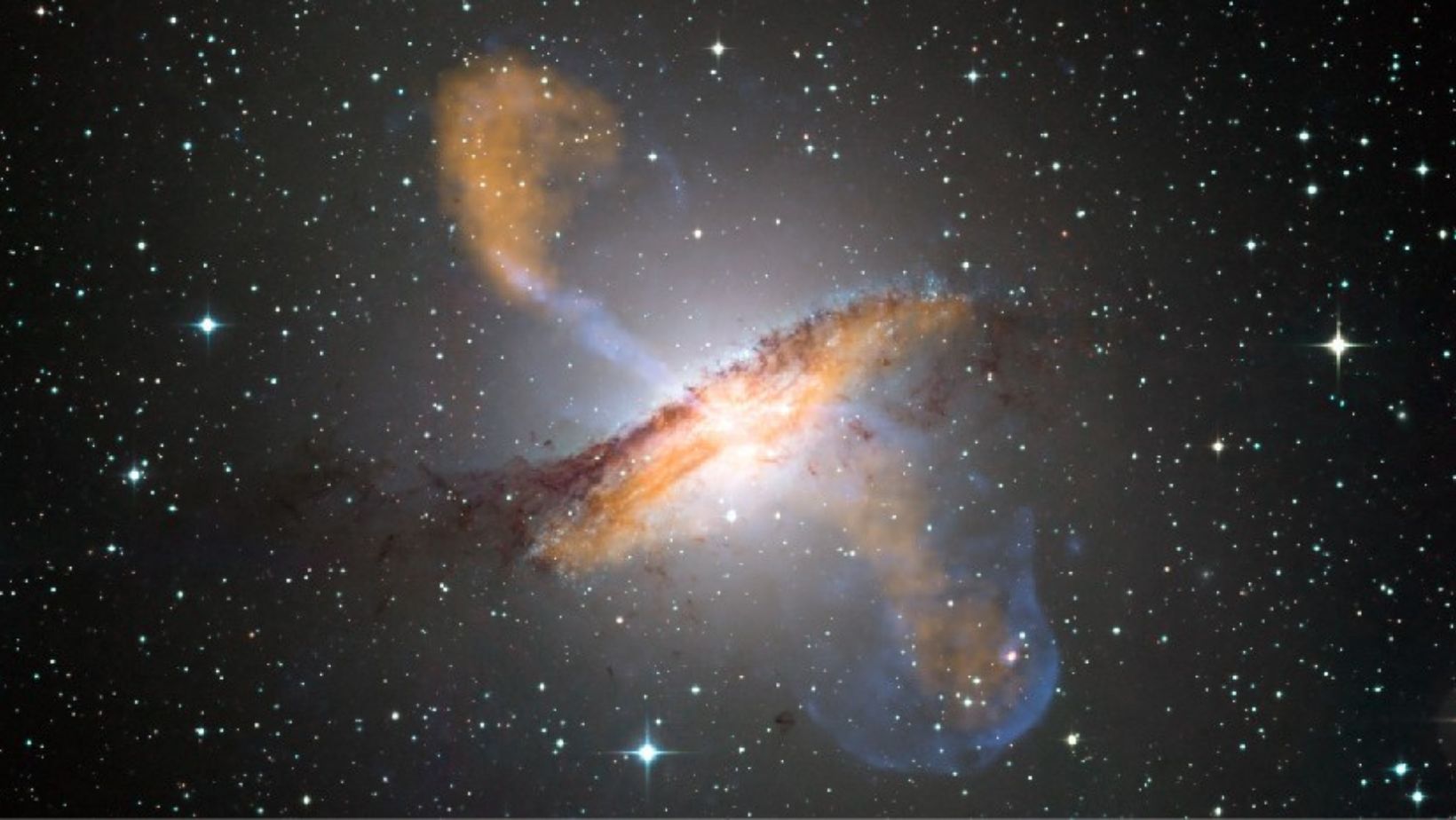Look up at the night sky and see just a handful of stars. But beyond them lies a vast universe filled with billions of galaxies, each a cosmic city of stars, gas, dust, and dark matter. Galaxies come in an astonishing array of shapes and sizes—some majestic spirals with swirling arms, others smooth and featureless ellipticals. Have you ever wondered why galaxies look so different? These variations are not random; they reveal cosmic evolution, collisions, star formation, and Galactic mysteries. In this journey through space, we’ll explore why galaxies come in diverse forms and what these differences tell us about the universe.
What is a Galaxy? A Primer on Cosmic Structures and Galactic Mysteries

A galaxy is a massive system of stars, gas, dust, and dark matter, all held together by gravity. Galaxies vary in size, containing anywhere from millions to trillions of stars. These stars orbit around a common center, often a supermassive black hole, which anchors the galaxy’s structure. Beyond stars, galaxies also contain vast clouds of gas and dust, the building blocks for new star formation.
Galaxies exist in various shapes, from spirals to ellipticals to irregular forms. The shape of a galaxy often depends on its age, size, and environment. Spiral galaxies like the Milky Way have distinct arms where stars form, while elliptical galaxies are older and lack such features. Galactic Mysteries.
Dark matter is crucial in galaxies, in addition to visible matter. Though we can’t see dark matter, it makes up most of the galaxy’s mass and influences its gravitational pull. Galaxies wouldn’t have the structure or stability they need without dark matter. Understanding these components helps us grasp the complex makeup of galaxies and how they evolve.
The Hubble Sequence: The Tuning Fork Diagram Explained
The Hubble Sequence is a system that classifies galaxies based on their shape and structure. Edwin Hubble introduced this classification in 1926, grouping galaxies into three main categories: ellipticals, spirals, and lenticulars. Galactic Mysteries. This sequence helps astronomers understand the physical differences between galaxy types.
They have a smooth, rounded shape with little internal structure. Spiral galaxies appear on the right side, split into two branches: barred spirals and regular spirals. These galaxies have arms extending from a central core, with some showing bars running through the core.
Lenticular galaxies sit at the center of the diagram. Galactic Mysteries. They have a disk-like structure without the spiral arms seen in true spirals. The Hubble Sequence doesn’t imply an evolutionary path, but it highlights how galaxies can vary in form.
The tuning fork diagram remains a valuable tool for studying galaxy shapes. Though our understanding has advanced, Hubble’s classification system provides a foundation. It helps astronomers compare galaxies and explore their origins and development.
Elliptical Galaxies: Spheres of Ancient Stars

Elliptical galaxies are among the oldest and most massive structures in the universe. Unlike spirals, they lack distinct arms or visible features. They appear as smooth, rounded shapes, ranging from nearly spherical to elongated. This lack of structure is due to the absence of significant star formation in modern ellipticals.
Most stars in elliptical galaxies are old, red, and low in mass. These stars formed billions of years ago, making ellipticals “retired” galaxies where new stars are rarely created. Galactic Mysteries. The gas and dust needed to form stars are mostly used up or blown away. As a result, ellipticals are populated by older, cooler stars.
Elliptical galaxies are often found in dense regions like galaxy clusters. They are believed to form through galaxy mergers and collisions, which disrupt the original structures. These violent events can strip away gas and trigger the formation of a single, large elliptical galaxy. Their size and shape depend on the types and number of galaxies involved in the merger.
Because of their age and lack of new star formation, elliptical galaxies give astronomers a glimpse into the early universe. Galactic Mysteries. Studying them helps us understand how galaxies evolve and how mergers shape the cosmos over time.
Spiral Galaxies: The Cosmic Pinwheels
Spiral galaxies are some of the most visually striking structures in the universe. They have a flat, disk-like shape with distinct spiral arms that swirl outward from a central bulge. These arms are regions of active star formation, where gas and dust come together to create new stars. Our own galaxy, the Milky Way, is a prime example of a spiral galaxy.
The bright, blue stars found in spiral arms are young and massive. These stars live fast and die young, giving spiral galaxies their vibrant appearance. Galactic Mysteries. The central bulge, on the other hand, contains older, redder stars. This contrast between young and old stars helps define the overall structure of spirals.
Understanding spiral galaxies helps astronomers study the process of star formation and galaxy evolution. These galaxies provide a glimpse into the ongoing activity of the universe, offering clues to how galaxies grow and change.
Barred Spiral Galaxies: The Role of Galactic Bars
Barred spiral galaxies are a unique type of spiral galaxy. They have a central bar-shaped structure made of stars, gas, and dust, which extends across the nucleus. Galactic Mysteries. This bar connects to the spiral arms, helping channel material from the outer regions toward the core. The Milky Way is a barred spiral, meaning our galaxy has this defining feature.
Bars play a key role in the evolution of barred spiral galaxies. They help funnel gas toward the central region, fueling star formation and feeding the supermassive black hole at the galaxy’s core. This movement of material also triggers the formation of new stars in the central bulge. Bars can make these galaxies more dynamic, leading to changes in their structure over time.
About two-thirds of all spiral galaxies are classified as barred spirals. Scientists believe bars form due to instabilities in the rotating disk of the galaxy. These bars may come and go over time as galaxies evolve.
Studying barred spirals helps astronomers understand the processes that shape galaxies and influence star formation. Bars are key drivers of galactic development, and their presence reveals how galaxies organize and redistribute material as they age.
Lenticular Galaxies: The Transitional Type
Lenticular galaxies, also known as S0 galaxies, are often considered a bridge between elliptical and spiral galaxies. Galactic Mysteries. They have a flat, disk-like structure similar to spirals but lack the prominent spiral arms. Lenticular galaxies contain little to no gas or dust, meaning new star formation is minimal. As a result, they are populated mostly by older, reddish stars.
The absence of spiral arms and star formation makes lenticular galaxies appear smooth, like ellipticals. However, their disk shape links them more closely to spirals. Astronomers believe lenticular galaxies may have once been spiral galaxies. Over time, interactions with other galaxies or internal processes may have stripped away their gas, halting star formation and leaving behind a disk without arms.
Lenticular galaxies are often found in galaxy clusters or groups, where interactions and mergers are more common. These environments may play a role in transforming spirals into lenticulars. The lack of gas suggests they have experienced events like galaxy mergers or tidal stripping that have removed their star-forming material.
Studying lenticular galaxies helps astronomers understand how galaxies evolve and transition between types. They provide insight into how interactions with other galaxies and environments shape their structure and star formation.
Irregular Galaxies: The Cosmic Oddballs and Galactic Mysteries
Irregular galaxies don’t fit into the neat categories of spiral or elliptical shapes. They lack a clear structure or form, appearing chaotic and uneven. These galaxies often contain large amounts of gas and dust, which fuel active star formation. Irregular galaxies can be small, but they are packed with bright, young stars.
Irregular galaxies often result from gravitational interactions or collisions with other galaxies. These events can distort their shape, stripping away gas or causing bursts of star formation. In some cases, they are remnants of larger galaxies that have been torn apart by interactions with neighbors. This chaotic history leaves them with irregular shapes and diverse star populations.
Despite their lack of structure, irregular galaxies are crucial to understanding galaxy evolution. They provide evidence of how galaxies interact and merge, offering insight into the forces that shape them. Some famous irregular galaxies, like the Large and Small Magellanic Clouds, are close neighbors to the Milky Way and provide excellent opportunities for study.
Studying irregular galaxies reveals the complexity of the universe. Their chaotic appearance reflects the dynamic nature of galaxy formation and evolution, showing how powerful cosmic forces influence the structure and future of galaxies over time.
Galactic Mysteries and Evolution: How Galaxies Change Over Time
Galaxies are not static; they evolve and change over billions of years. Factors like mergers, star formation, and gravitational interactions influence galactic evolution. Collisions between galaxies can dramatically alter their shape and structure. Over time, a galaxy might change from a spiral to an elliptical or even an irregular galaxy.
Star formation plays a key role in a galaxy’s evolution. Younger galaxies actively form stars, giving them bright, defined structures like spiral arms. As a galaxy ages, it uses up its gas and dust, slowing down or stopping star formation. Older galaxies, like ellipticals, contain mostly older, cooler stars and have a smoother appearance.
Mergers between galaxies are one of the most significant events in galactic evolution. When two galaxies collide, their structures get disrupted, often forming a new galaxy type. These interactions can also trigger bursts of star formation and lead to the formation of supermassive black holes.
Dark matter also influences galaxy evolution, affecting the gravitational pull within galaxies. Understanding how galaxies change over time helps astronomers learn more about the universe’s history. It sheds light on how structures evolve and the future for galaxies like our Milky Way.
The Role of Dark Matter in Shaping Galaxies: Galactic Mysteries
Dark matter is an invisible substance that makes up about 27% of the universe’s total mass. It doesn’t emit, absorb, or reflect light, making it undetectable by conventional means. However, dark matter exerts a strong gravitational influence on galaxies. It helps shape their structure by affecting the motion of stars and gas within them.
This halo extends far beyond the visible parts of the galaxy, influencing its overall gravitational field. The presence of dark matter explains why galaxies rotate at speeds that would otherwise cause them to fly apart.
Studying dark matter helps astronomers understand how galaxies are formed and evolve. It affects the distribution of matter within galaxies, influencing their shapes and star formation rates. By analyzing the effects of dark matter, scientists can make more accurate models of galaxy formation and predict their future development.
In summary, dark matter is crucial for understanding the structure and dynamics of galaxies. Its gravitational influence helps hold galaxies together and shapes their formation and evolution over cosmic timescales.
Cosmic Collisions: Galaxy Mergers and Their Impact on Morphology

Cosmic collisions, or galaxy mergers, are dramatic events that reshape the structure of galaxies. When galaxies collide, their gravitational forces interact, causing significant changes in their morphology. Over time, the merging galaxies can combine to form a single, larger galaxy with a new structure.
The impact of these mergers depends on the size and type of the galaxies involved. Collisions between two spiral galaxies can lead to the formation of an elliptical galaxy, while irregular galaxies may emerge from more chaotic encounters. The collision process also often results in the creation of a central supermassive black hole. This black hole can grow significantly as it absorbs material from the merging galaxies.
Galaxy mergers also play a crucial role in the evolution of galaxy clusters. When galaxies within a cluster collide, they can alter the overall dynamics and growth of the cluster itself. Studying these cosmic collisions helps astronomers understand how galaxies evolve and how large-scale structures in the universe develop over time.
In essence, galaxy mergers are fundamental processes that drive the transformation of galaxies. They provide valuable insights into how galaxies form, evolve, and interact within the cosmic landscape.
Conclusion: Galactic Mysteries
Galaxies are diverse and dynamic, constantly evolving over cosmic timescales. Each galaxy type tells a unique story about the universe, from the structured spirals to the chaotic irregulars. Galactic Mysteries. Dark matter, mergers, and star formation influence their shapes and structures. Understanding these processes provides insight into how galaxies form, change, and interact, offering a glimpse into the larger cosmic picture. As we continue to study these galactic phenomena, we unravel more about the universe’s past, present, and future.
FAQs: Galactic Mysteries
What causes the different shapes of galaxies?
The shape of a galaxy is primarily influenced by its history of interactions and mergers, the distribution of its dark matter, and the internal processes of star formation. For example, spiral galaxies have well-defined arms due to ongoing star formation, while elliptical galaxies lack such features because they are often older and have exhausted their gas reserves.
How do astronomers determine the type of a galaxy?
Astronomers use various methods to classify galaxies, including visual observations through telescopes and detailed imaging. They analyze the galaxy’s shape, structure, and star distribution. Tools like the Hubble Sequence help categorize them into types such as elliptical, spiral, or irregular.
Can galaxies change from one type to another?
Yes, galaxies can evolve from one type to another. For instance, a spiral galaxy might become a lenticular galaxy if it loses its gas and ceases star formation. Galactic Mysteries. Mergers and collisions can also transform galaxies, leading to different structures over time.
What role do galaxy clusters play in galactic evolution?
Galaxy clusters are groups of galaxies bound together by gravity. They play a significant role in galactic evolution by providing environments where galaxy interactions and mergers occur more frequently. Galactic Mysteries. These interactions can lead to changes in galaxy morphology and influence the formation of new galaxies within the cluster.
How does the study of galaxies help us understand the universe?
Studying galaxies helps us learn about the fundamental processes of cosmic evolution, such as star formation, galaxy interactions, and the role of dark matter. Galactic Mysteries. Understanding these processes gives insights into the broader history and structure of the universe, including its past events and future development.

